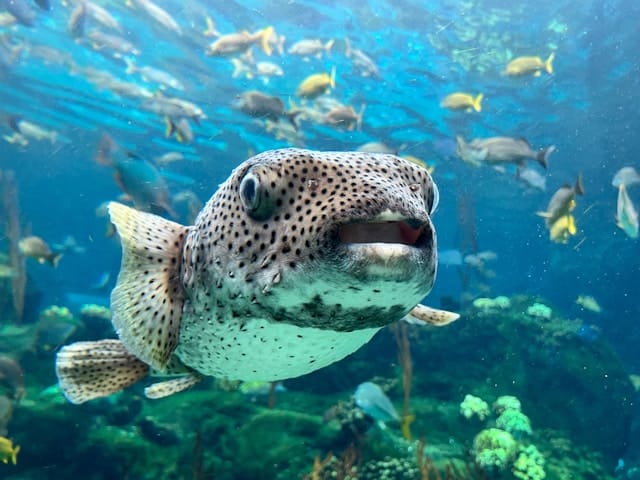What Are the Health Implications of Microplastics in Freshwater Fish Consumption?

When you sit down to enjoy a meal of freshwater fish, you may unknowingly be consuming more than just the nutrients and proteins that fish offer. Emerging studies have highlighted a growing concern about the presence of microplastics, tiny particles of plastic, in the bodies of fish. This article will dive into this subject and discuss the potential impact on human health when consuming fish contaminated with microplastics.
The Frequency of Microplastics in Freshwater Fish
Microplastics in freshwater fish are becoming an increasingly common occurrence. These tiny particles, often invisible to the naked eye, have found their way into our waterways and subsequently into the bodies of aquatic species.
A voir aussi : What Role Do Probiotics Play in the Treatment of Pediatric Eczema?
Microplastic contamination is prevalent in both marine and freshwater environments, with studies showing that microplastics have been detected in various species across different geographical locations. According to a review on Google Scholar, numerous studies have reported the presence of microplastics in fish from rivers and lakes around the world. These microplastics, or MPs, can come from various sources, such as discarded plastic waste, clothing fibers, and cosmetics.
Crossref, a reputable digital hub for scholars and researchers, also affirms the prevalence of microplastics in fish. A study found on Crossref reported that over 50% of fish in the River Thames in the UK contained microplastics. Another study documented a similar prevalence in the Great Lakes of North America.
A découvrir également : How Can AI Improve Prediction and Prevention Strategies for Type 2 Diabetes?
How Fish Ingest Microplastics
Fish ingest microplastics through several means. Firstly, microplastics can be mistaken for food by fish due to their small size and buoyancy. Secondly, microplastics can also be unintentionally ingested when fish consume water or prey already contaminated with microplastics.
Environmental Science & Technology, a journal indexed on PubMed, has published a study demonstrating that microplastics are not only ingested but can also accumulate in fish tissues. This is especially concerning as it can lead to the biomagnification of these particles up the food chain, possibly impacting larger predators, including humans.
Potential Health Risks to Humans
What does this mean for humans who consume freshwater fish containing microplastics? While research is still ongoing, there are increasing concerns about the potential health implications.
According to a review on PubMed, microplastics themselves are largely indigestible, meaning they can accumulate in the body over time. More concerning, these tiny plastic particles can act as carriers for other harmful substances. For example, per- and polyfluoroalkyl substances (PFAS), a group of man-made chemicals known for their persistent nature and potential health risks, can adhere to microplastics and may be ingested by humans along with the plastic particles.
Additionally, a study indexed on DOI, an international standard for citing digital content, suggested that microplastics can cause physical damage to tissues and organs due to their hardness and sharp edges. The same study also reported that microplastics can leach harmful additives, such as plasticizers and flame retardants, into the body.
The Need for Further Research and Action
While the exact health implications of consuming freshwater fish contaminated with microplastics are not yet fully understood, the existing studies signify a clear risk to human health. Therefore, further research is needed to provide more definitive answers about the potential health effects of microplastic ingestion.
Moreover, broader action is needed to tackle the issue of microplastics. This includes reducing our reliance on single-use plastics, improving waste management systems, and promoting more sustainable alternatives.
While this article may raise concerns about consuming freshwater fish, it’s important to note that fish remain an excellent source of protein and essential nutrients. However, it is necessary to be aware of the potential risks associated with microplastics and to take steps to mitigate these risks where possible.
In conclusion, microplastics in freshwater fish are a real and growing concern that warrants further attention from researchers, policymakers, and consumers alike. We need to continue to invest in research, enact policies to reduce plastic waste, and educate the public about the potential risks of microplastics. In doing so, we can help ensure the safety of our food and the health of our planet’s ecosystems.
The Use of Microplastics in Consumer Products and its Impact on Freshwater Fish
Microplastics are omnipresent, not only in our environment but also in consumer products. According to a study found on Google Scholar, microplastics can originate from a multitude of sources including personal care products, synthetic clothing fibers, and even car tires. These tiny plastic particles get washed off with the wastewater, bypass water treatment facilities due to their minute size, and end up contaminating various water bodies. Subsequently, these microplastics find their way into the bodies of aquatic organisms, including freshwater fish.
The impact of microplastics on fish health cannot be overstated. For one, as per a study indexed on doi scitotenv, microplastics can cause physical damage to fishes’ gastrointestinal tract due to their hardness and sharp edges. Moreover, according to a study in the Mar Pollut Bull, microplastics can induce oxidative stress, inflammation, and other pathological changes in fish species.
Cyprinus carpio, a common freshwater fish, has been widely studied for its vulnerability to microplastic pollution. A study published on Mar Pollut and indexed on doi envpol showed that these fish ingested microplastics, leading to accumulation in their gastrointestinal tracts, liver, and gills. Such a buildup of microplastics can affect these fishes’ ability to reproduce, grow, and survive, thereby posing a risk to the entire aquatic ecosystem.
Possible Measures to Mitigate the Effects of Microplastics on Freshwater Fish
Mitigating the effects of microplastics on freshwater fish and subsequently on human health requires a multi-pronged approach. Firstly, a study on Sci Total Environ indexed on DOI Marpolbul highlights the importance of reducing overall plastic production and consumption. This includes discouraging the use of single-use plastics and promoting eco-friendly alternatives.
Secondly, improvement of waste management practices is crucial. As per a research published on Total Environ, plastic waste should be properly collected, sorted, and recycled or disposed of in a manner that prevents its fragmentation into microplastics and subsequent entry into water bodies.
Thirdly, policy interventions are necessary. Policymakers should consider imposing stricter regulations on the use of microplastics in consumer products and encourage the development of biodegradable alternatives, as suggested by a review on Environ Pollut.
Lastly, there is an urgent need for more research on the topic. Understanding the extent of the problem, the specific health risks associated with consuming freshwater fish contaminated with microplastics, and the efficacy of potential solutions will guide informed decision-making.
Conclusion
The presence of microplastics in freshwater fish is a pressing environmental and public health issue. While further research is needed to fully understand the health implications, existing studies indicate a clear risk to both aquatic life and humans. Measures such as reducing plastic consumption, improving waste management, formulating strict policies, and conducting more research are crucial in mitigating this issue. As consumers, being aware of the problem and making sustainable choices can also make a significant difference. In the end, protecting our freshwater fish from microplastic pollution is not just about preserving our food supply but also about safeguarding the health of our planet’s ecosystems.
